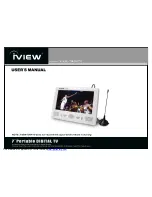
2095-0
4
60706-230
TESTING POLICY
Before any generator is shipped from the factory, it
is fully checked for performance. The generator is
loaded to its full capacity, and the voltage, current
and frequency are carefully checked.
Rated output of generator is based on engineering
tests of typical units, and is subject to, and limited
by, the temperature, altitude, fuel, and other condi-
tions specified by the manufacturer of the applicable
engines.
UNIT CAPABILITIES
GENERATOR CONNECTIONS
These generators are designed for 20 volt alternat-
ing current (AC) use only. They utilize two different
means of connecting to you loads. Some models
come with two 20 Volt outlets mounted in them and
other models come with three wire. Actual connec-
tions will be discussed later in the manual.
Check the appliance or tool nameplate for the cur-
rent and voltage to insure compatibility.
STARTING ELECTRIC MOTORS
Electric motors require much more current (amps) to
start them than to run them. Some motors, par-
ticularly low cost split-phase motors, are very hard
to start and require 5 to 7 times as much current
to start them as to run them. Capacitor motors are
easier to start and usually require 2 to 4 times as
much current to start them as to run them. Repul-
sion Induction motors are the easiest to start and
require /2 to 2 /2 times as much to start them as
to run them.
Most fractional horsepower motors take about the
same amount of current to run them whether they
are Repulsion Induction (RI), Capacitor (Cap), or
Split-Phase (SP) type. The chart below shows the
approximate current required to start and run various
types and sizes of 20 volt 60 cycle electric motors
under average load conditions.
HP AMPS
RUNNING
STARTING AMPS
SP
CAP
RI
1/6
3.2
16 to 22
6 to 13
5 to 8
1/4
4.5
22 to 32
9 to 18
7 to 12
1/3
5.2
26 to 35
10 to 21
8 to 17
1/2
7.2
not made 14 to 29 11 to 18
1
13.0
not made 26 to 52 20 to 33
The figures given above are an average load such
as a blower or fan. If the electric motor is connected
to a hard starting load such as an air compressor, it
will require more starting current. If it is connected
to a light load, or no load such as a power saw, it will
require less starting current. The exact requirement
will also vary with the brand or design of the motor.
Self-exiting generators respond to severe overload-
ing differently than utility power. When overloaded,
the engine is not able to supply enough power to
bring the electric motor up to operating speed. the
generator responds with high initial starting current,
but the engine speed drops sharply. The overload
may stall the engine. If allowed to operate at very
low speeds, the electric motor starting winding will
burn out in a short time. The generator winding
might also be damaged.
CAUTION: EQUIPMENT DAMAGE
RUNNING THE GENERATOR SET UNDER
THESE CONDITIONS MAY RESULT IN DAMAGING
THE GENERATOR STATOR AS WELL AS THE MO-
TOR WINDING.
Because the heavy surge of current required for
starting motors is required for only an instant, the
generator will not be damaged if it can bring the
motor up to speed in a few seconds of time. If dif-
ficulty is experienced in starting motors, turn all other
electrical loads off and if possible reduce the load on
the electric motor.






























